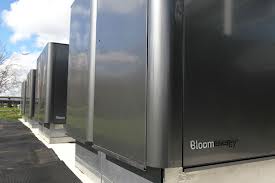Power to the Datacenter: Time for Energy Supply to Catch Up to Rate of IT Innovation
Peter Gross, vice president of mission critical systems at Bloom Energy, must be a very frustrated man. He has seen innovations in computer equipment move at the speed of Moore's Law. That equipment increasingly relies on datacenters to process and transmit data. But most datacenters still get their power by plugging into the same old power grids. No wonder energy efficiency has become such a huge issue for datacenters. “[T]he design for power distribution has not changed much in the past 20-odd years,” he laments.
 Of course, Bloom Energy would benefit enormously if the ICT industry moves more quickly into new energy delivery systems—and, indeed, Bloom Energy has seen some significant design wins for its power cells, from companies such as Apple and eBay, in the past year. Datacenter operators are looking for ways to control energy costs and increase reliability, by using techniques such as improved low-power cooling systems, DCIM (datacenter infrastructure management) software that helps balance power usage, facilities built in colder climates, servers that consume less power, and locations that offer cheap hydroelectric power.
Of course, Bloom Energy would benefit enormously if the ICT industry moves more quickly into new energy delivery systems—and, indeed, Bloom Energy has seen some significant design wins for its power cells, from companies such as Apple and eBay, in the past year. Datacenter operators are looking for ways to control energy costs and increase reliability, by using techniques such as improved low-power cooling systems, DCIM (datacenter infrastructure management) software that helps balance power usage, facilities built in colder climates, servers that consume less power, and locations that offer cheap hydroelectric power.
The ICT industry is certainly aware of the problem and has begun to respond—often in the name of going “green” by getting off coal-generated power from the electrical grid. Indeed, some of the techniques do improve the sustainability of datacenters, and to some companies sustainability itself is a major motivation for the changes.
But an article in ZDNet takes the view that power distribution innovations lag far behind, requiring what one industry spokesperson describes as the need for “massive changes in infrastructure” to meet the new demands. As datacenters grow from facilities that draw perhaps 2MW of power to 30MW or 60MW today, the industry has suddenly discovered that it has to up the ante in power distribution ahead of building bigger and more numerous datacenters.
Perhaps that's why Bloom Energy has suddenly seen a pickup in business. Arunangshu Chattopadhyay, director for power product marketing and head of central technical support for Emerson Network Power Asia, says that instead of prioritizing energy needs by first deciding on UPS, voltage regulation, surge suppression and grounding, bonding and earthing issues, the industry needs to look at energy as a “power quality” pyramid.
And an ABB spokesperson says that technology is not the entire solution. The industry needs more collaboration between owners, designers, vendors and providers that will focus on true cost of ownership.
Whatever the reason and whatever solution the industry takes, the message is simple: If you don't want to slow down the pace of innovations in ITC, you'd better speed up those in the business of delivering energy.










